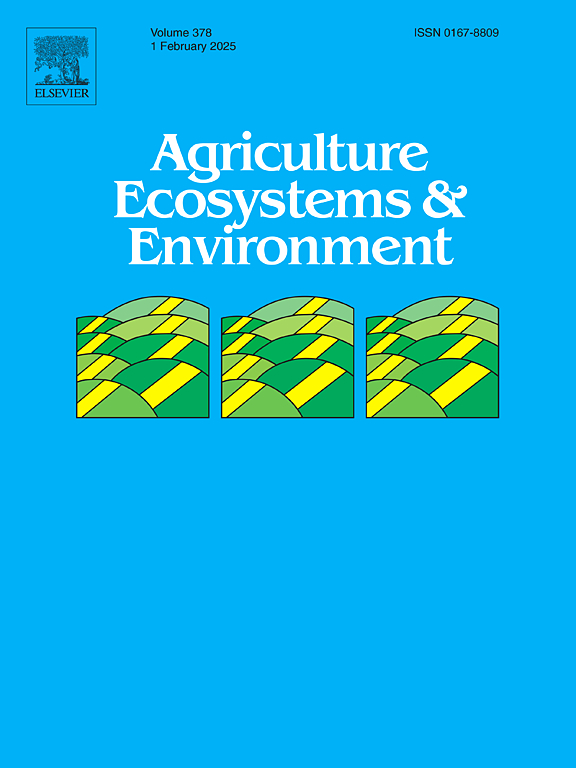Influence of fragment and roadside vegetation on canola (Brassica napus) and faba bean (Vicia faba) pollination in South Australia
IF 6
1区 农林科学
Q1 AGRICULTURE, MULTIDISCIPLINARY
引用次数: 0
Abstract
Native vegetation remnants within agricultural landscapes play a crucial role in supporting biodiversity and ecosystem services such as pollination; however, their benefits are not always recognised by farmers. We investigated the influence of native vegetation remnants, both in fragment and linear forms, on pollination of Brassica napus (canola or oilseed rape) and Vicia faba (faba beans) in South Australia. We used the difference in the number of seeds per pod between open-pollinated (unbagged) plants and those unpollinated by animals (bagged) as pollination success. We found a positive relationship between seed set (and total crop yield) and the area of fragment and linear vegetation within 200 m for both crop species, with linear vegetation showing a stronger influence on both crop species possibly because of its use by exotic honeybees. Increasing distance to the closest vegetation had a significant negative effect on seed set. Sandy soils diminished the positive effects of native vegetation on bean seed set. Of the pods sampled from beans and canola, 12.2 % and 2.4 % respectively achieved maximum pollination; all were unbagged. Area of fragment and linear vegetation within 200 m of plants exerted a greater effect on maximum pollination than proximity to vegetation for canola. Only distance to vegetation was a significant predictor of bean maximum pollination. These results demonstrate the positive effects of non-crop vegetation with configurational heterogeneity on crop pollination. Given the common practice of crop rotation on commercial farms, the impact of various vegetation types fluctuates across cropping cycles. To ensure the continuity of pollination services over time, conserving and restoring fragment and linear vegetation in agricultural regions are imperative.
求助全文
约1分钟内获得全文
求助全文
来源期刊

Agriculture, Ecosystems & Environment
环境科学-环境科学
CiteScore
11.70
自引率
9.10%
发文量
392
审稿时长
26 days
期刊介绍:
Agriculture, Ecosystems and Environment publishes scientific articles dealing with the interface between agroecosystems and the natural environment, specifically how agriculture influences the environment and how changes in that environment impact agroecosystems. Preference is given to papers from experimental and observational research at the field, system or landscape level, from studies that enhance our understanding of processes using data-based biophysical modelling, and papers that bridge scientific disciplines and integrate knowledge. All papers should be placed in an international or wide comparative context.
 求助内容:
求助内容: 应助结果提醒方式:
应助结果提醒方式:


